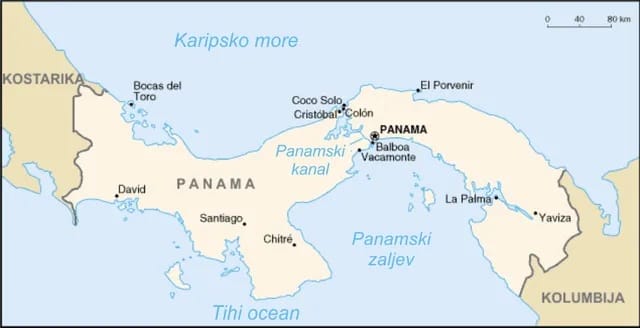President-elect Donald Trump has recently discussed taking over Greenland, Canada, and the Panama Canal. The Panama Canal crosses the country of Panama, the nation that connects North and South America. If there were no canal, ships would have to go around the entire continent of South America, adding over 8,000 miles and up to two months to the journey.
America basically established Panama, urging and supporting its secession from Columbia in 1903. The Hay-Herran Treaty was drawn up without a single Panamanian present. Panama’s president and a delegation came to New York to negotiate the treaty, which was drafted and signed the night before the Panamanian delegation arrived. The person allegedly representing Panama during the negotiations was a French engineer, Philippe Bunau-Varilla, employed by a French canal company. Bunau-Varilla hadn’t been to Panama in 17 years and never returned afterward.
The treaty granted the United States autonomous rights over an area about 10 miles wide and 52 miles long, where the canal would be dug. The canal was completed in 1914 and was always the subject of ire among the Panamanian people. By the 1960s, they demanded a renegotiation of the Hay-Herran Treaty, which they weren’t allowed to participate in when it was drawn up. In 1964, there were riots, and the American Embassy was evacuated.
On October 1, 1968, Arias Madrid took office as president of Panama, promising to lead a government of “national union” that would end the reigning corruption and pave the way for a new Panama. A week and a half later, on October 11, 1968, the National Guard (Guardia Nacional) ousted Arias and initiated the downward spiral that would culminate with the United States invasion in 1989—that spiral included the United States supporting and taking down General Manuel Antonio Noriega. When Noriega got too independent, he was accused of drug trafficking by federal juries in Tampa and Miami. Human Rights Watch wrote in its 1989 report:
“Washington turned a blind eye to abuses in Panama for many years until concern over drug trafficking prompted indictments of the general by two grand juries in Florida in February 1988”
US control of the canal and the Canal Zone had been contentious since before World War II. Many Panamanians felt that the Zone rightfully belonged to Panama; student protests were met by the fencing-in of the zone and an increased military presence there. Demands for the United States to hand over the canal to Panama increased after the Suez Crisis in 1956, when the United States used financial and diplomatic pressure to force France and the UK to abandon their attempt to retake control of the Suez Canal, previously nationalized by the Nasser regime in Egypt. Panamanian unrest culminated in riots on Martyr’s Day, 9 January 1964, when about 20 Panamanians and 3–5 US soldiers were killed.
A decade later, in 1974, negotiations toward a settlement began and resulted in the Torrijos–Carter Treaties. On September 7, 1977, the treaty was signed by President Jimmy Carter and Omar Torrijos, de facto leader of Panama. This mobilized the process of granting the Panamanians free control of the canal so long as Panama signed a treaty guaranteeing the permanent neutrality of the canal. The treaty led to complete Panamanian control effective noon on December 31, 1999, and the Panama Canal Authority (ACP) assumed command of the waterway. The Panama Canal remains one of Panama's chief revenue sources.
No American president, from Teddy Roosevelt to Joe Biden, ever wanted control of the nation of Panama, only the canal that basically splits the country in half. Like most colonizers, the United States wanted to maximize its use of the resource, in this case, the Canal, without getting bogged down in the oversight of the people. The US had the Canal, the fences, and the Army, which was all they needed until the Panamanian people demanded back what they never negotiated away.
“I took the Isthmus, started the canal and then left Congress not to debate the canal, but to debate me.” — Teddy Roosevelt
As Donald Trump points out, Panama paid $1 for the rights to the canal. To acquire the Canal, America paid the French $30 million for its equipment and previous trouble. Panama only got $10 million from an agreement they didn’t participate in and $250,000 a year after that. Columbia was still pissed because the U.S. and its Army helped steal Panama in the first place. In a separate treaty, Columbia got $25 million over 5 years and special privileges in the Canal Zone. Columbia agreed to recognize Panama as a nation.
The Trump-spewed history of the Canal omits the fact we engineered a secession and backed it up with our troops. America gave France and Columbia far more than Panama and then supported corrupt dictators throughout its existence as long as they did our bidding. Panama is supposed to maintain “permanent neutrality” of Canal operations but America’s definition of neutral means favoring America and its friends.
Why did America show no interest in taking over Panama itself? John C. Calhoun of South Carolina would know the answer because it had too many Panamanians. Too many brown-skinned people is why America didn’t expand further into Mexico during its growth, using Manifest Destiny as the justification—more on that in Part Two.
This article originally appeared on Medium and is edited and republished with author's permission. Read more of William Spivey's work on Medium.
